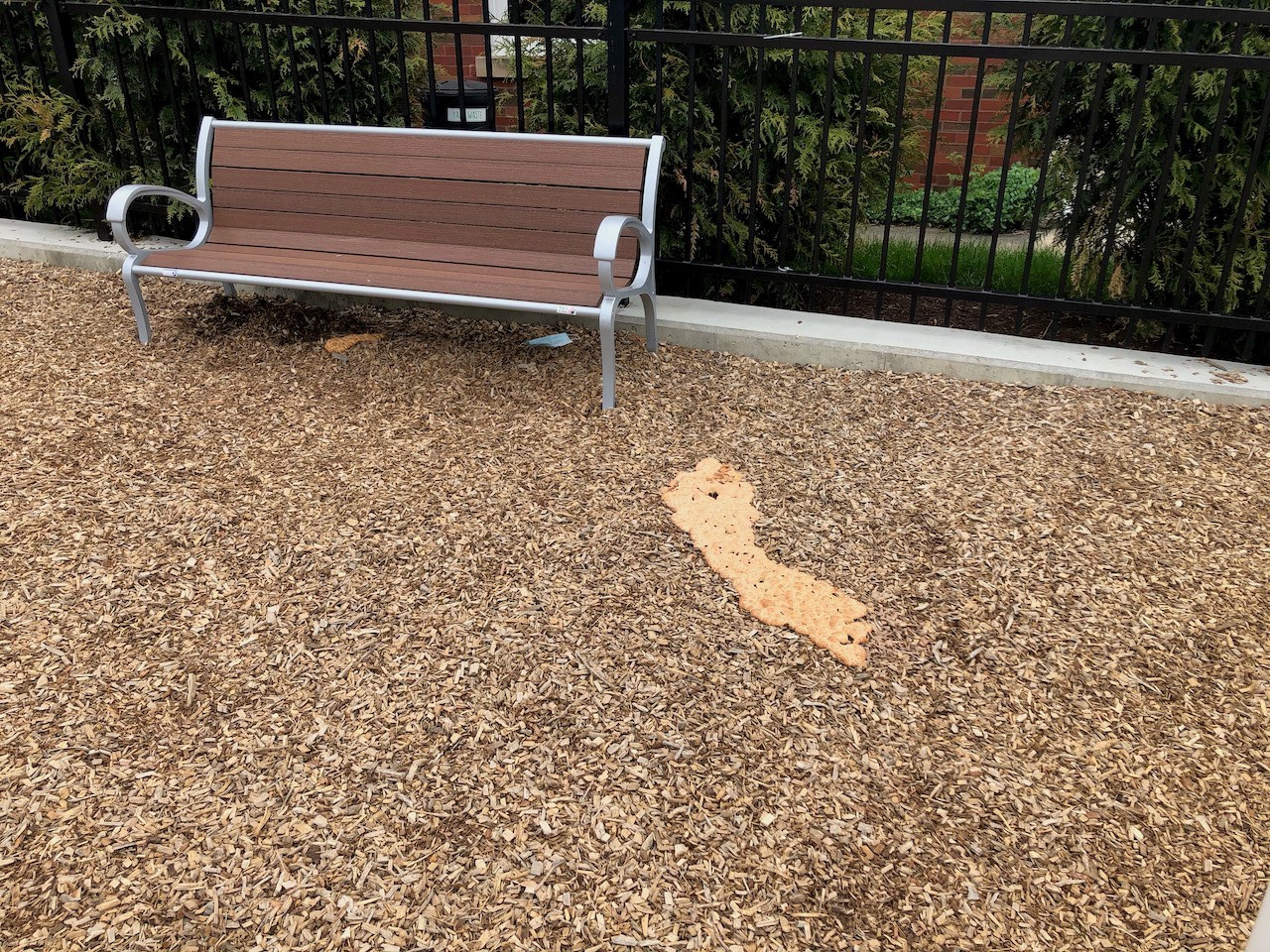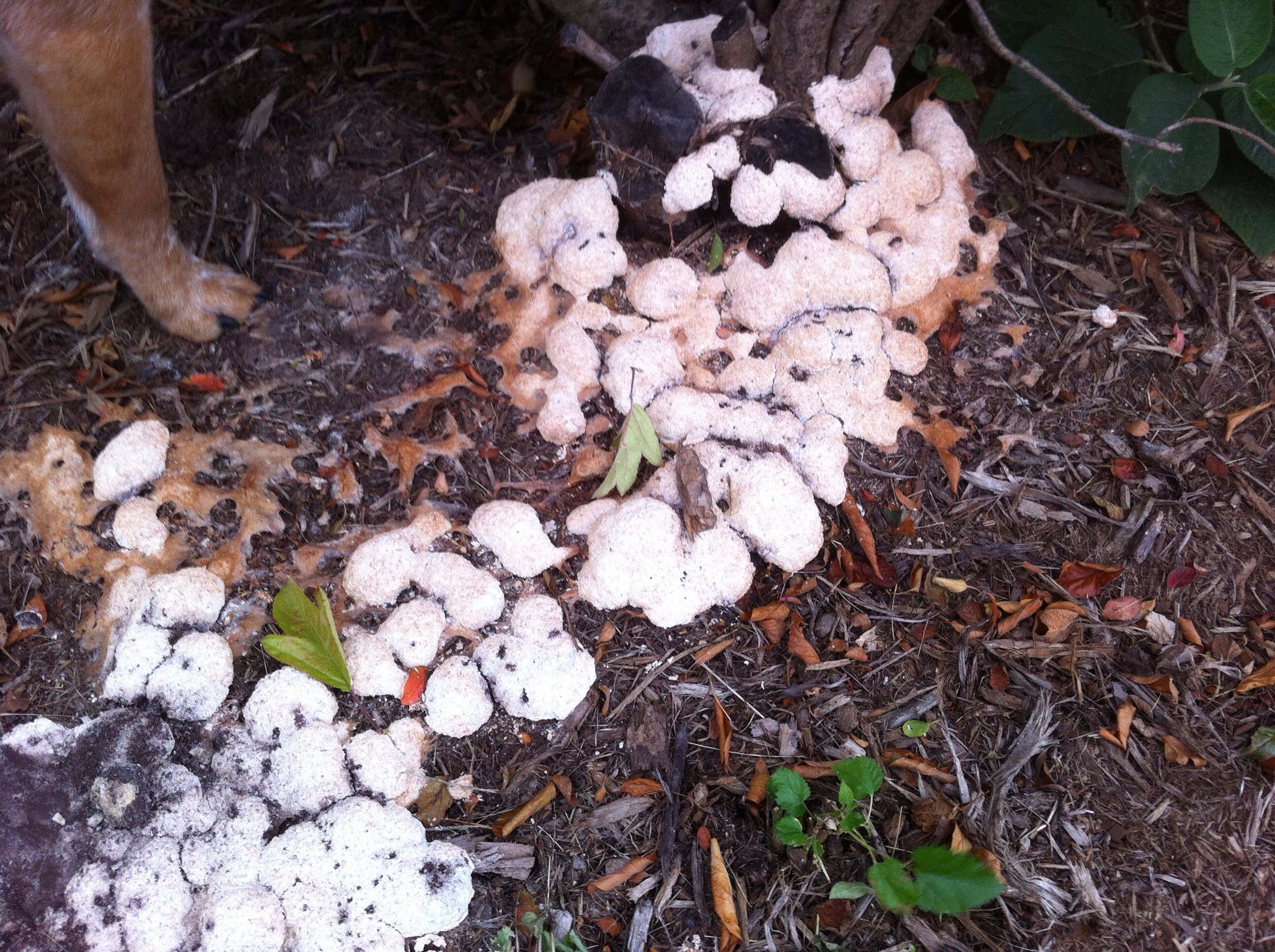Issue 4, June 1, 2021
Slime Mold on Mulch
The recent yet brief taste of summer weather brought about the appearance of slime molds on mulch beds. Slime molds are harmless organisms. However, I will admit they can have a somewhat off-putting appearance akin to vomit. I captured the following photo during a recent trip to a playground with my kids.

Photo 1 Slime mold on playground mulch
Every parent seemed determined to keep their children a reasonable distance from the “unknown substance.” Looking back, I wonder what they thought of me as I took pictures and examined the slime mold patches.
Slime molds are rather interesting organisms. They first appear as slimy masses ranging from a few inches to over a foot across. They can be colorful, with shades of orange, yellow-green, and even some blues and purples. They also have the ability to move. However, movement is too slow to watch. Over a span of several days, the slime mold masses may move short distances. The organisms eventually develop colorful, crusty fruiting bodies filled with masses of dusty spores. The spores are then dispersed to create new slime mold patches.

Photo 2 Slime mold (aka dog vomit slime mold) on landscape mulch
Slime molds can be found on a variety of surfaces, especially those with decomposing organic matter. Slime Molds are most often observed on recently applied mulches and wood chips, especially following warm, wet weather. They can be an alarming sight. However, the slime molds will not harm your plants, pets, or family. No chemical controls are known or recommended to control slime molds. They usually dry up and disappear in dry weather. You can speed the process by removing unsightly patches in the landscape. Spore masses can be moved to a spot in the yard that is out of sight or disposed of in a compost pile or with other landscape waste.
Author:
Travis Cleveland